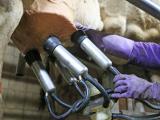Dec 15, 2011
Egyptian mother, child contract H5N1
Egypt's health ministry has confirmed H5N1 avian flu in a mother who died of the disease and in her young child, who is hospitalized, the World Health Organization (WHO) said today. The mother—who was 24 weeks pregnant when she got sick—was hospitalized Dec 1 and died Dec 3, according to a WHO update. The child was hospitalized Dec 2 and is listed in stable condition. Both are from Dakahlia governorate and received oseltamivir (Tamiflu) on admission. The report does not list an age for either patient but says the child is "young." Both had exposure to sick and dead backyard chickens and turkeys, according to the update. Egypt has now confirmed 155 cases of the disease—second in the world to Indonesia—including 53 deaths. Its 2011 totals thus far are 36 H5N1 cases and 13 deaths, leading the world in both categories. The global WHO-confirmed total has now reached 573 cases and 336 deaths.
Dec 15 WHO update
Canadian First Nation living conditions may have exacerbated H1N1 flu
The first outbreak of 2009 pandemic H1N1 (pH1N1) flu in a small, remote Manitoba First Nation reserve may have been exacerbated by a lack of running water, according to a Health Canada study obtained by the Winnipeg Fee Press. In a story today, the newspaper said the agency had kept the report secret until the Free Press submitted an access-to-information request and a complaint, then released the "heavily censored epidemiological study" to the paper. During 8 weeks from late April to June 2009, St. Theresa Point reserve had 175 cases of likely or confirmed pH1N1 flu that were severe enough to a visit to the reserve's nursing station. Of these, 23 were lab-confirmed, an outcome that could happen only if a patient were evacuated to Winnipeg for the advance testing needed. The total represented 5% of the province's 450 confirmed cases, even though the reserve makes up only 0.3% of Manitoba's population, according to the story. "It is likely that one contributing factor to this outbreak was the lack of running water in homes," the study said, adding that a communal pump might have caused further problems. "The pump handle could have served as a means of transmitting the novel H1N1 virus." In addition, St. Theresa Point Chief David McDougall said overcrowded homes likely played a role. He said that, during the pandemic, nearly 30 sick St. Theresa Point residents were evacuated to Winnipeg and one died.
Study: H1N1 variants show severity clues
An analysis of respiratory pH1N1 flu viruses from patients in Italy's Lombardy region during the 2010-11 flu season found four distinct virus clusters, along with evidence that suggested higher virus replication in the lower respiratory tracts of those with severe illness. The study's goal was to explore variants with hemagglutinin mutations in the upper and lower airways of those with severe infections. Their investigation included specimens from 45 patients with severe illness from 24 intensive care units (ICUs), 40 patients hospitalized with moderate illness, and 54 patients in the community who had mild illness. Sequence analysis found four clusters, with most of the patients in cluster A having severe or moderate infections. They identified several amino acid mutations, which they found only in patients with severe illness. The D222G and N variants, which have been linked to severe pH1N1 infections in other parts of the world, were seen only in lower respiratory tract samples. The authors concluded that a variety of clusters circulated in the region last flu season, and that certain variants linked to more serious illness replicated preferentially in the lower airway.
Dec 14 PLoS One abstract
Novel reassortant H3N2 flu found in Chinese pigs
Chinese researchers have isolated three novel H3N2 reassortant viruses from pigs in southern China that contain genetic material from a pH1N1 strain, similar to those associated with 11 recent infections in US patients, according to a report yesterday in the Journal of Virology. The scientists said it was the first evidence of such a virus in the country, and the first detection of H3N2 in pigs during ongoing surveillance in southern China since 2005. The viruses, which contain surface genes derived from a triple-reassortant H3N2 swine flu virus and internal genes from pH1N1, were detected in two pigs in Hong Kong on Jun 21 and in a Guangxi pig on Nov 7, 2010. In spite of their separation geographically and chronologically, they are genetically very closely related, the authors write. "This provides direct evidence that the pdm/09-like internal gene complex has been successfully incorporated into a swine H3N2 virus, and been prevalent in the pig population for a period of time," they add.
Dec 14 J Virol abstract


















